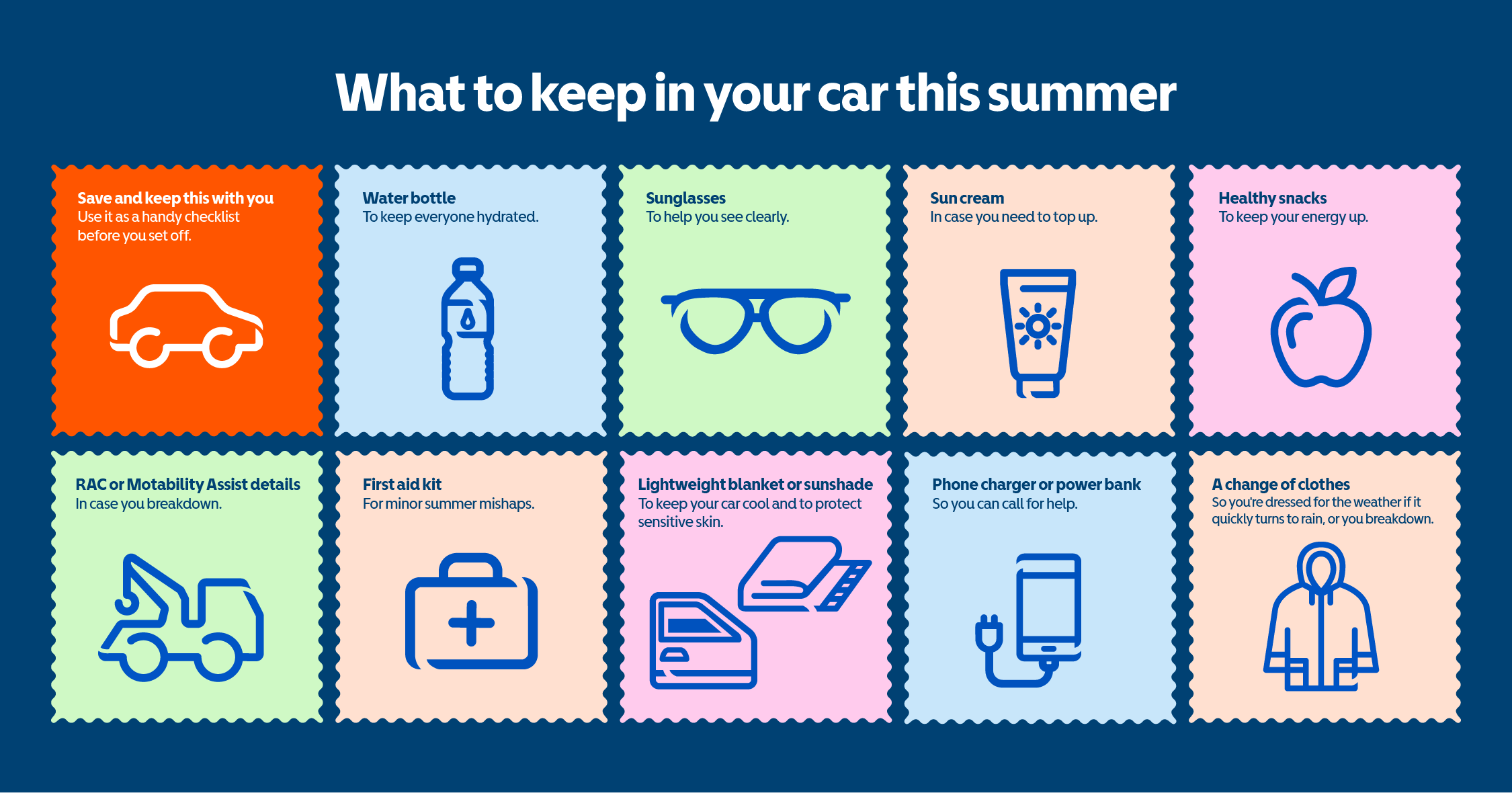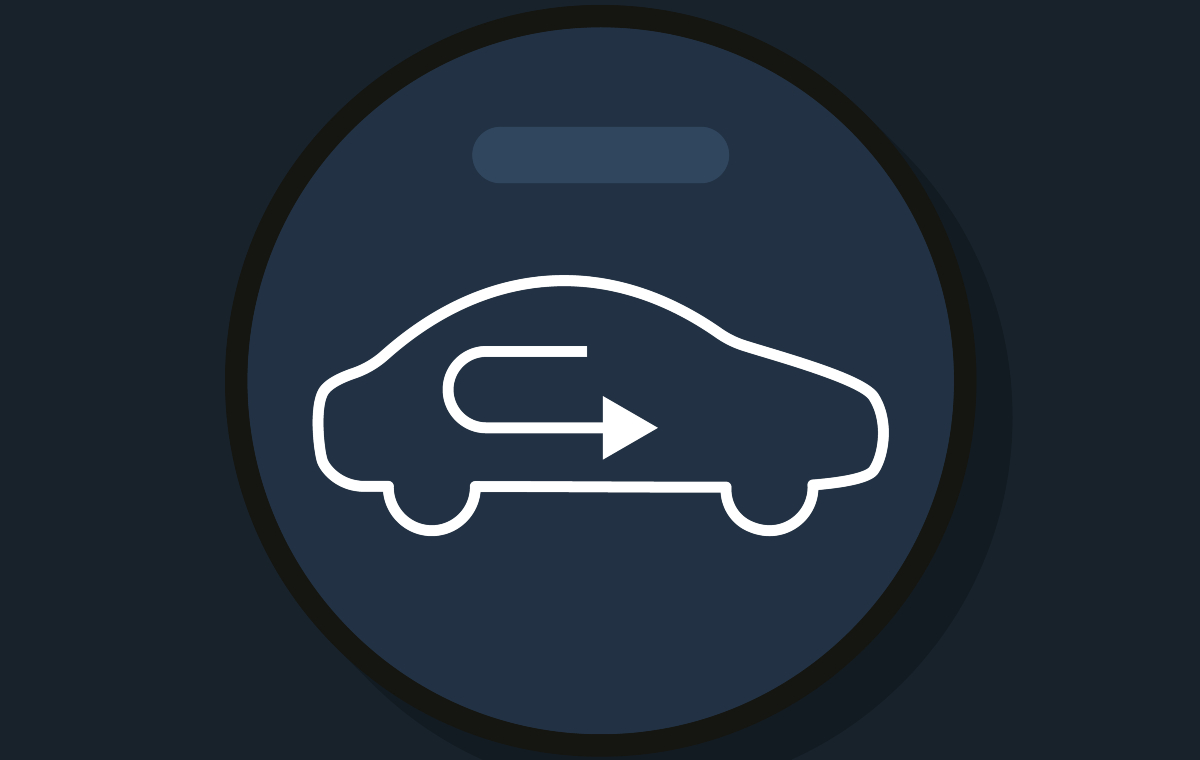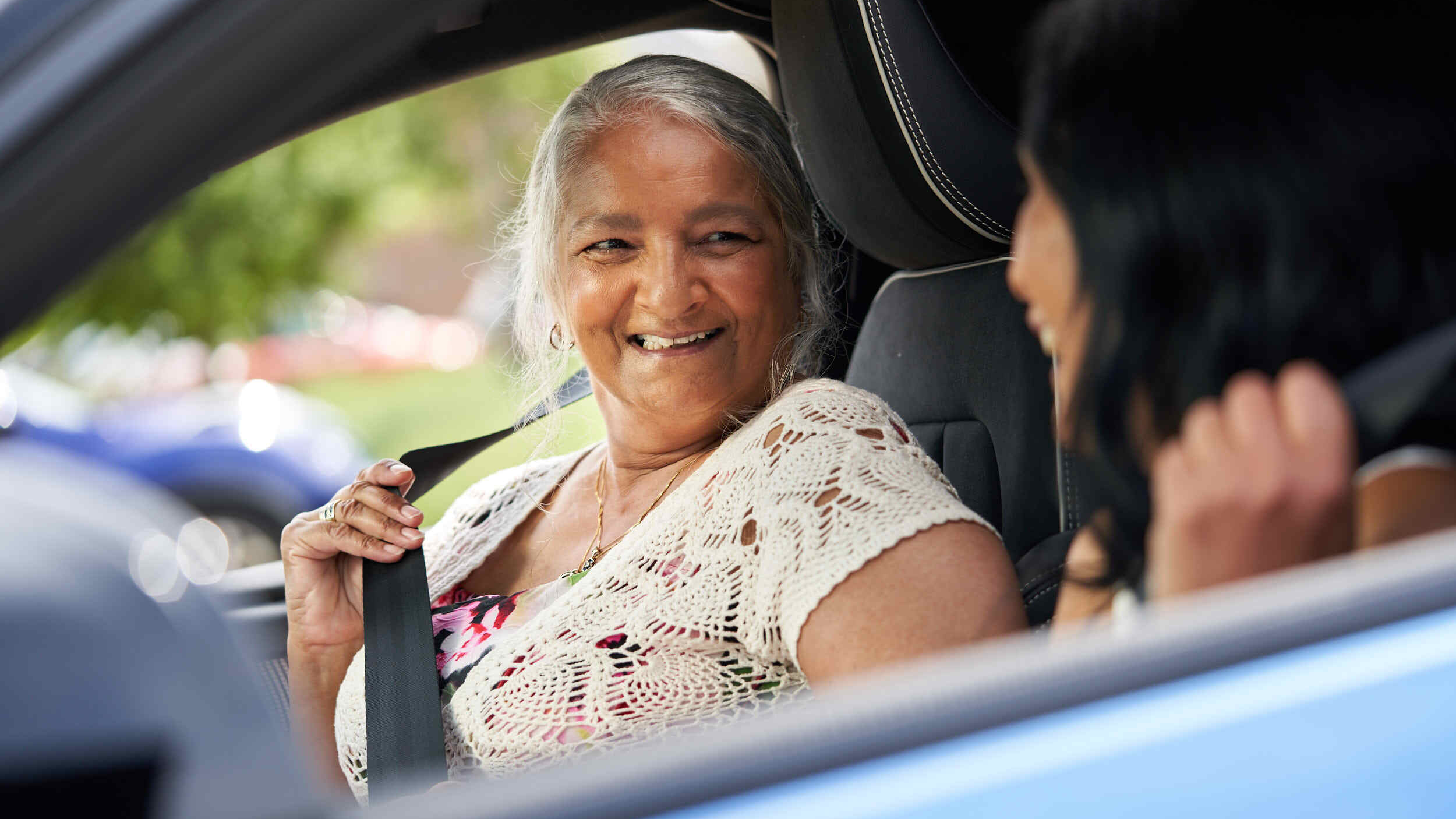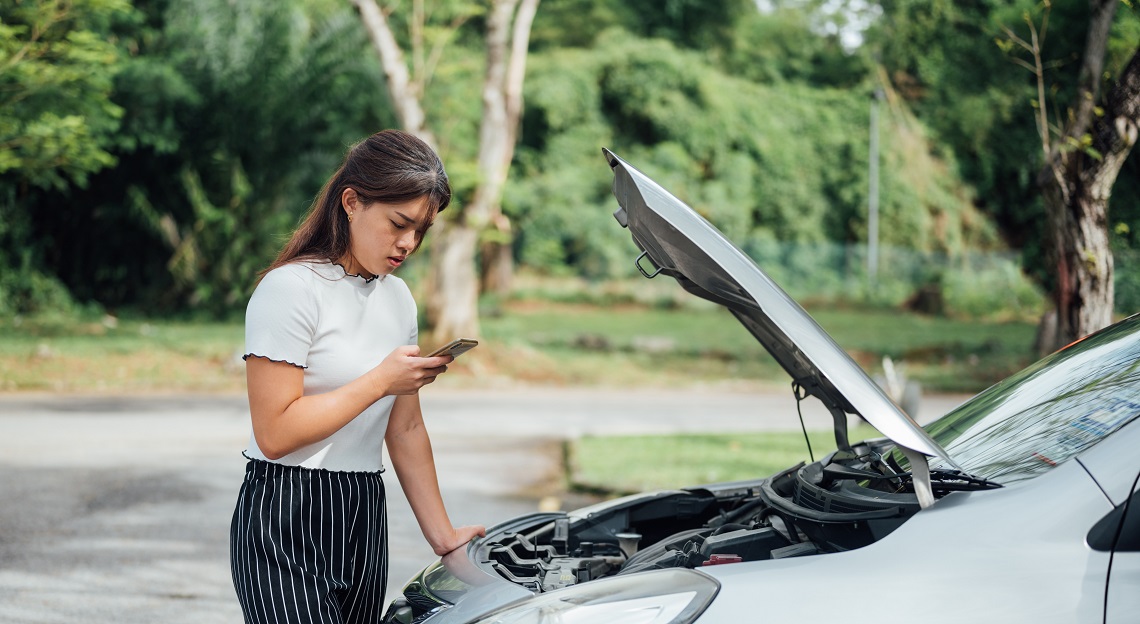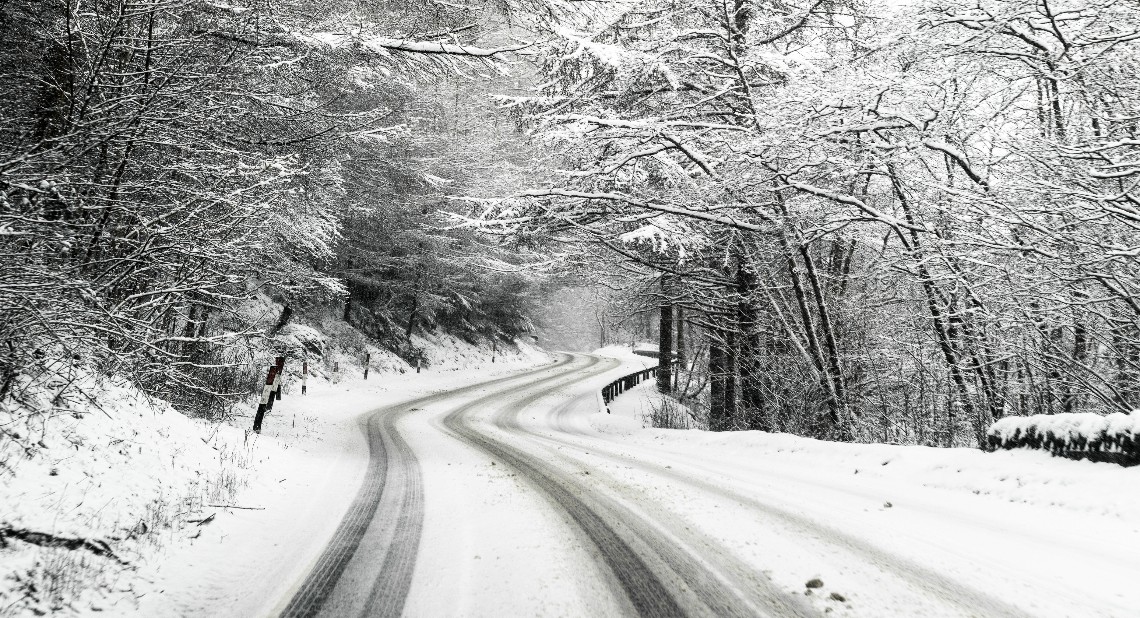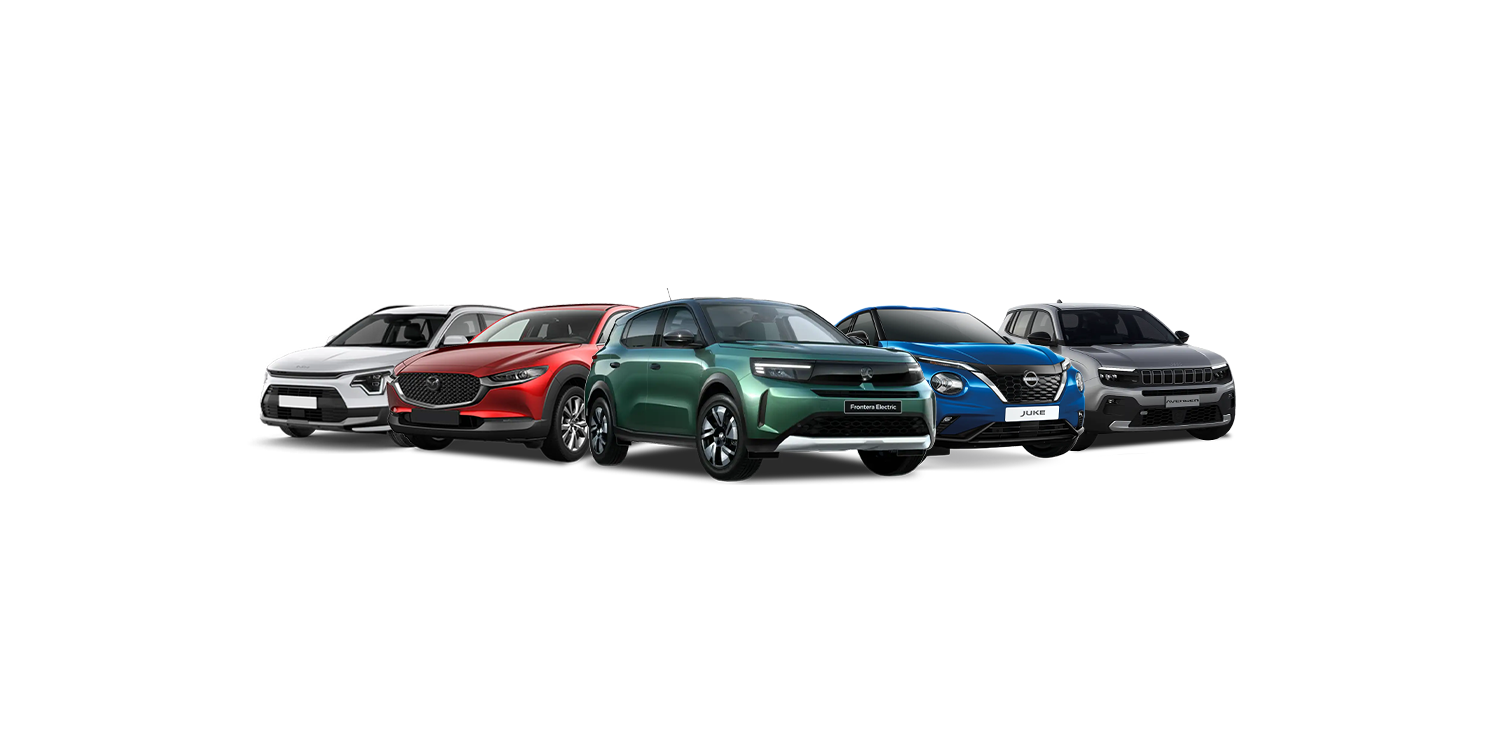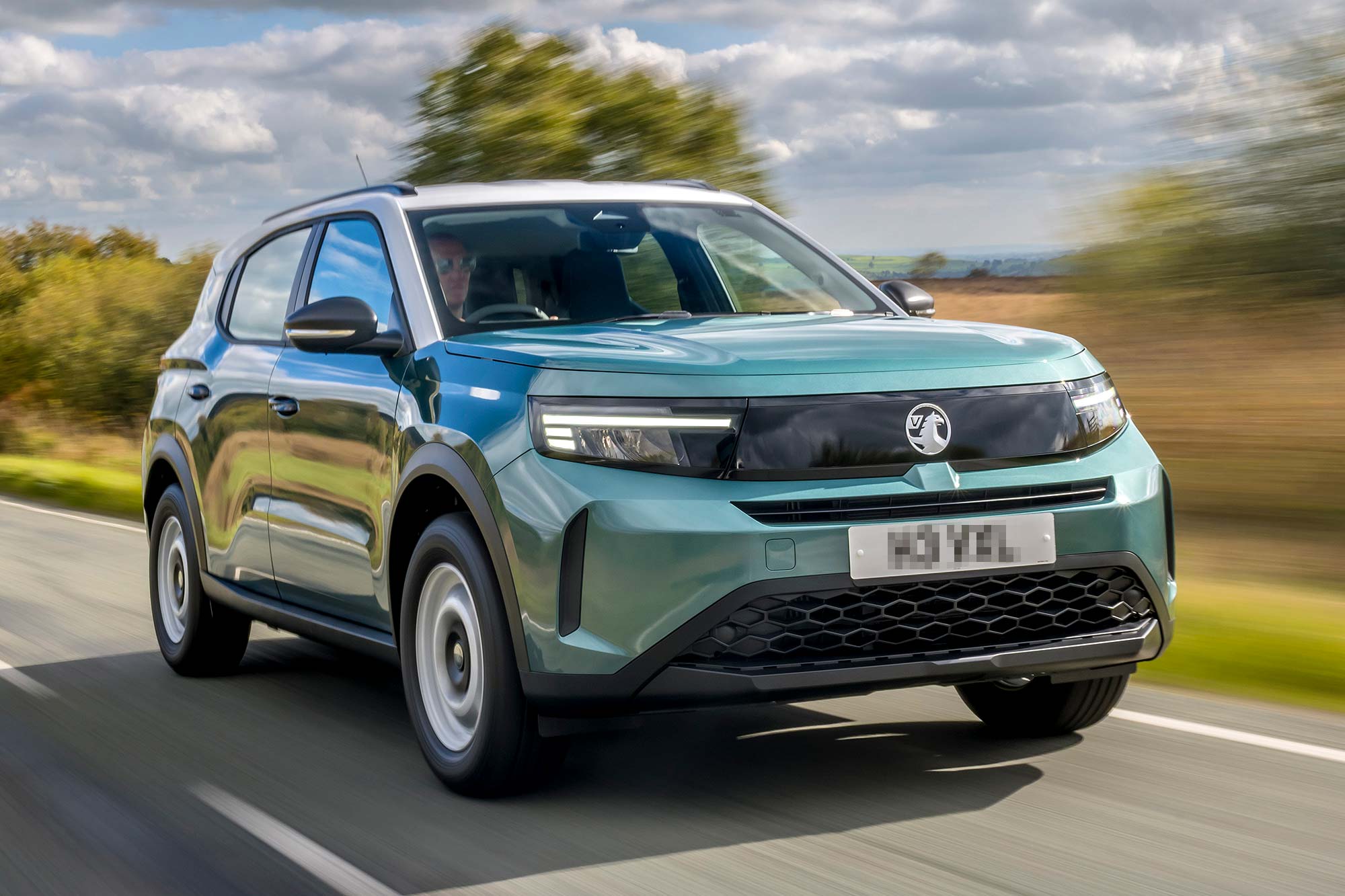It’s OK to drive in hot weather. You just need to be well prepared. We’ll help you stay safe, comfortable, and confident on the road this summer.
Driving in hot weather, especially heatwaves, brings challenges for drivers. As the temperature rises, cars and passengers can quickly overheat, visibility can drop, and staying in full control of your vehicle can become difficult. If something happens, we give you breakdown cover with the RAC, so you can travel with peace of mind.
Heat and low visibility can have a real impact on your ability to drive in hot conditions. Here are some things to think about before and during your drive:
- How driving in hot weather affects you and your car
- Prepare before you set out in hot weather
- Keep your passengers safe and comfortable in hot weather
How driving in hot weather affects you and your car
Heat affects both you and your vehicle, while you’re driving. Here’s how:
You’re more likely to break down in the summer
This is because the sun can be hard on a car and cause it to overheat. The numbers show you’re more likely to have an accident too, because people’s alertness falls.
Another reason for these high number is there are simply lots of cars on the road. The weekend after schools break up tends to be the busiest. Typically, that’s the last weekend in July.
How temperature affects you and your car
The cooling systems in your car are under more stress when it’s hot, so things are more likely to go wrong. It’s important you check your coolant regularly, so your car does not overheat.
It’s not just your car that can overheat. You and your passengers can too. It’s important you keep everyone in your car cool.
The heat can greatly affect your driving and how alert you are. Dehydration, for example, can cause tiredness, fatigue and lower concentration. That’s a dangerous combination if you’re behind the wheel.
What to do if your car’s overheating
Call RAC Motability Assist on 0800 73 111 73. Or on 1800 535 005 if you’re in the Republic of Ireland. They’re open all day, every day.
They’ll try to get someone out to you within 45 minutes, but this can vary at busy times.
Follow everything we’ve covered and you’ll make your journey almost as enjoyable as your holiday destination. And remember to check out our guide on driving techniques in hot weather to see the rest of our handy tips.
Prepare before you set out in hot weather
Never head out in the heat without checking a few things first:
Check your car using ‘FORCES’
It’s important you check your car is in good, working order before you set off. The RAC recommends you think about five key ‘FORCES’ before any trip in hot weather:
- Fuel: make sure your tank’s at least a quarter full. Or charge your electric vehicle (EV) to more than 30%
- Oil: check your engine oil, to lower the risk of a breakdown. Take the dipstick out, under your bonnet, and wipe it clean. Then reinsert it and pull it out again to see your oil level
- Rubber: check your tyres are inflated to the correct pressure and the tread depth is at least 3mm. Here are some top tips for looking after your tyres. Check your blades are clearing your screen properly and the rubber has not worn away
- Coolant: do a quick check of your coolant before you set off. If you need to, top it up so it’s between the ‘min’ and ‘max’ levels
- Electrics: make sure your windscreen wipers are working, for example. If they’re not, contact your dealer for repairs or blade replacements
- Screenwash: keep your screen washer fluid topped up, to make sure you have good visibility on your long drives. Use a good quality screenwash
If you have any problems on your journey, remember we give you RAC breakdown cover for the whole of your lease, to give you peace of mind.
How to avoid heavy traffic
Traffic jams are often unavoidable, but you can plan your journey carefully to minimise the time you and your car spend overheating in queues.
Check route planners to find the quickest route. Make a note of where petrol stations or recharging points are along the way.
Plan your rest stops. That means picking out your favourite restaurant or coffee shop. You can do the same for shaded areas. You can charge your EV while you rest up too.
Leave early to get ahead of everyone else and try to avoid city centres. Be prepared for delays and always have a plan B if you face unexpected problems.
Bring the essentials with you
Pack enough cold water to last the whole journey. You’ll need it to stay alert and hydrated.
Remember to pack sunglasses, a hat, and sun cream too. The sun’s harmful rays can still cause skin damage easily, even through the windows of your car.
And because hot conditions can quickly bring rain and storms, it’s a good idea to pack an umbrella and a change of clothes.
Stay fully charged
Make sure your phone is fully charged, especially on long journeys. In lots of cars, you can charge it while you drive.
A portable power bank is always a good idea too. If your car breaks down or you have another emergency, having a fully charged phone means you can call for help.
Other important things to take in your car
- A first aid kit
- A warning triangle
- A high visibility vest/jacket
- A fire extinguisher, just in case
- An empty fuel can
- Extra engine oil and water (for topping up)
- A light bulb kit
- An up-to-date road map or sat-nav
- Extra medication, as you might not be able to get them if you’re abroad
Driving with hay fever
If you suffer and need to keep pollen out of the car, you might need to drive with your windows closed and the air conditioning on. Do not drive if your medication makes you drowsy.
Keep your passengers safe and comfortable in hot weather
Think about your passengers too, especially if you have kids or pets in the car. The best way is to keep the inside of your car at a comfortable temperature.
Give the kids enough in-car entertainment to keep them happy and comfortable. And stop for regular breaks so they can stretch their legs.
Windows down or the air conditioning on?
It’s a common problem. Some say if you’re travelling below 45mph, you should open the windows to keep cool.
And at over 45mph, it’s better to turn the air conditioning on and put the windows up. That’s because of the extra drag, caused by open windows.
Remember, running the air conditioning while the windows are open makes things less efficient. And it uses extra fuel or more charge in your EV, which makes it less economical.
Look out for the air recirculation button too, near the air con dial. This cools air from the inside, instead of pulling warm air in from outside. It puts less strain on your engine or battery and it’s more efficient. The button has a picture of a car with an arrow inside.
The air recirculation button © Getty / Lana Nikova
Get into a cool car: precondition your EV
Preconditioning lets you set the temperature inside your EV, or hybrid, before you leave the house. It’s much nicer to get into a cool car, so do what you can to lower the temperature before you get in.
Many modern cars let you cool the cabin remotely using an app. If you have a home chargepoint, you can precondition your car while it’s charging.
How to spot a heat-related illness
These are things like:
- Heat cramps
- Heatstroke
- Heat exhaustion
They’re all dangerous and you’ll need you to act quickly if they happen. The best way to spot them is to look out for symptoms like:
- Muscle cramps
- Heavy sweating
- Dizziness, and headaches
- And in worse cases, confusion, seizures, and losing consciousness
Stop as safely as you can, away from traffic, then cool yourself down and drink lots of fluids. If they do not go away, get medical help straight away.
One way to avoid these is to have regular breaks. You’ll get the chance to stretch your legs and relieve the tension of focusing on the road. And grab a drink, to stay hydrated.
Interested in joining the Scheme?
Could the Motability Scheme help you stay mobile?
Related articles
How to prevent your car from overheating this summer and beyond
![]()

